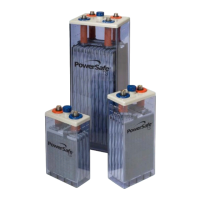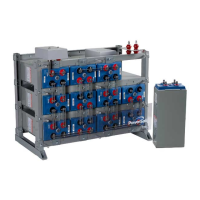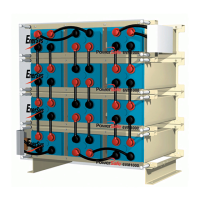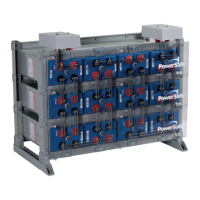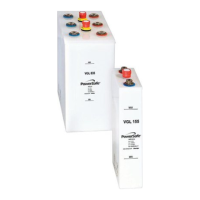www.enersys.com Publication No. US-RE-IOM-002 January 2012 Page 33
12.1.4 Cleaning Flame Arrestors
When cells are overfilled with electrolyte (above the high level line) or are excessively
overcharged, the diffuser material of the flame arrestor may become partially clogged from
electrolyte spray. Replace all flame arrestors having clogged pores or clean the arrestors as
follows.
Immerse the flame arrestor several times in a plastic bucket filled with fresh water. After each
immersion, eject the water by vigorous shaking or with an air blast. Following the immersion of
15 flame arrestors, dump and refill the bucket with clean water.
Do not use any cleaning or neutralizing agents in the cleaning water, since any dry residue may
clog the pores of the diffuser materials.
12.2 Maintenance Records
A complete recorded history of the battery operation is essential for obtaining satisfactory
performance. Good records will show when corrective action is required to eliminate possible
charging, maintenance or environmental problems.
Should you have ANY questions concerning how to perform the required maintenance, contact
your nearest EnerSys sales/service representative or call the corporate office number listed on
the back of this manual and ask for EnerSys
®
Service.
Accumulate and permanently record the following data for review by supervisory personnel so
that any necessary remedial action may be taken:
The initial records are those readings taken after the battery has been in regular float service for
3 months (90 days). These should include the battery terminal float voltage and specific gravity
reading of each cell corrected to 77
o
F (25
o
C), all cell voltages, the electrolyte level,
temperature of one cell on each row of each rack, and cell-to-cell and terminal connection detail
resistance readings. It is important that these readings be retained for future comparison.
The frequency and types of readings recorded are usually governed by the standard operating
procedures and policies of the user. Adequate battery records are an invaluable aid as a check
on maintenance procedures, environmental problems, system failures and corrective actions
taken in the past.
While specific gravity readings are a good indication of the health of a cell, other readings can
be used to indicate relative health. However, it is highly recommended that a supplemental full
set of readings on each cell (including specific gravity) be taken approximately two years after
service initilization to verify that the floating conditions of the battery are appropriate.
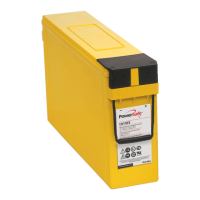
